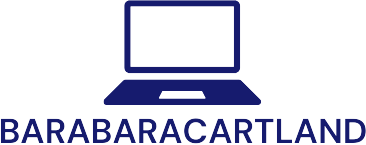Table of Contents
ToggleIn a world where emojis often replace words and “LOL” is a universal language, the language learning market has never been hotter. With over 7,000 languages spoken globally, it’s no wonder that people are eager to dive into new tongues—whether to impress a date, ace that job interview, or simply order a complicated dish without resorting to charades.
From apps that promise fluency in just 30 days (spoiler alert: they don’t) to immersive experiences that make you feel like a local in Paris, the options are endless. As globalization continues to shrink the world, the demand for language skills skyrockets. It’s not just about learning; it’s about connecting, exploring, and maybe even picking up a few quirky phrases along the way. Buckle up as we explore this vibrant market that’s transforming how people communicate and connect across cultures.
Overview Of The Language Learning Market
The language learning market continues to expand rapidly as globalization increases cultural interactions. In 2023, the global language learning market is valued at approximately $54.7 billion, reflecting a significant growth trend. Language learners pursue education for various purposes including travel, career advancement, and personal enrichment.
Mobile applications play a central role in this growth. Apps like Duolingo and Babbel offer user-friendly platforms that allow learners to study at their own pace. Interactive features and gamification keep users engaged, driving user retention rates higher. Moreover, online platforms like italki connect learners with native-speaking tutors, providing personalized learning experiences.
In addition to apps, immersive language learning experiences gain popularity. Language schools and programs that facilitate study abroad opportunities help learners connect directly with local cultures. This direct interaction enhances comprehension and fluency, as learners face real-life conversation scenarios.
As the demand for language skills rises, businesses also invest in employee training. Companies recognize that multilingual staff can enhance customer relations and expand market reach. In fact, 75% of employers favor candidates with language proficiency.
The diversity of offerings continues to grow, supporting various learning styles. Traditional classroom settings coexist with digital solutions, ensuring that individuals can choose their preferred methods. Those looking for shortcuts can opt for intensive boot camps or workshops to achieve quick results.
Overall, the language learning market showcases a blend of technological advancements and traditional methods, catering to an ever-increasing number of learners. As interest in languages maintains its trajectory, this dynamic field promises further innovations and opportunities for connection.
Key Trends Shaping The Market
The language learning market is experiencing transformative trends that influence how learners engage with new languages. Embracing technology remains a significant driver in this evolution.
Technology Integration
Technology integration enhances learning experiences, leveraging tools such as artificial intelligence and machine learning. Mobile applications and gamified platforms actively engage users, making language acquisition enjoyable. Social media offers additional interactive avenues, facilitating connections between learners and native speakers. Streaming services contribute by providing access to authentic content in different languages, broadening exposure to diverse dialects and cultures. This blend of technological advancements supports varied learning preferences, ensuring individuals find suitable methods to achieve their language goals.
Increased Demand For Online Learning
The transition toward online learning reflects changes in learner preferences and lifestyles. Convenience plays a key role, with busy individuals favoring remote, flexible options. Online platforms provide instant access to a wide range of resources, from courses to live tutoring sessions. Statistically, the global e-learning market is projected to reach $375 billion by 2026, underscoring the shift toward digital solutions in education. Many learners thrive in virtual environments, fostering a sense of community among global peers. This shift opens new pathways for acquiring language skills, presenting opportunities tailored to individual goals and schedules.
Major Players In The Language Learning Market
The language learning market comprises various key players, each contributing significantly to its growth.
Traditional Institutions
Traditional institutions remain foundational in language education. Universities and colleges offer accredited courses that attract learners seeking structured education and recognized certifications. Many schools incorporate foreign language programs into their curriculums, fostering early exposure to different languages. Moreover, some institutions partner with study abroad programs, providing immersive experiences that reinforce learning. Adult education centers also play a vital role by offering classes tailored for working professionals looking to enhance their language skills. These options emphasize the importance of personal interaction and mentorship in developing proficiency.
Digital Platforms
Digital platforms are reshaping how individuals learn languages. Apps like Duolingo and Babbel dominate the market, appealing to users who favor engaging, gamified experiences that facilitate learning. Online tutoring platforms such as italki connect learners with experienced native speakers for personalized instruction. Monthly subscription models allow access to extensive resources, catering to diverse learning styles. Social media channels and forums serve as supplemental tools, enabling users to practice language skills in real-world contexts. The flexibility and convenience of these digital platforms align with the increasing preference for online learning.
Target Audience And Demographics
The language learning market attracts a diverse audience characterized by various age groups and motivations. Understanding these demographics helps tailor offerings to meet specific needs.
Young Learners
Young learners frequently seek language acquisition for different reasons, including school requirements and personal interest. Language programs in schools focus on developing foundational skills while fostering engagement through games and interactive activities. Statistics show that language learning enhances cognitive abilities in children, which leads to better problem-solving skills and creativity. Parents often want their children to learn languages to help with future career opportunities. Mobile apps designed for young audiences use colorful interfaces, making lessons appealing and accessible. Programs that emphasize cultural exposure add depth to language education, creating connections with global perspectives.
Adult Learners
Adult learners pursue language skills for various motivations, such as career advancement and travel. Many adults engage with online courses or mobile applications that support self-paced learning, addressing their busy schedules. Studies indicate that 75% of employers prioritize language proficiency during hiring processes, motivating professionals to improve their skills. Workshops and immersive experiences appeal to adults eager for quick results. Networking events and language exchanges further enrich learning by fostering community connections. Personal enrichment remains a key motivator, as many adults wish to explore different cultures and languages in their leisure time, deepening their understanding of the world.
The language learning market is thriving and evolving rapidly. With diverse options available learners can choose paths that suit their needs and preferences. The blend of technology and traditional methods creates a dynamic environment for acquiring new languages.
As globalization continues to influence interactions across cultures the demand for language skills is only expected to grow. This market not only fosters personal and professional development but also enriches connections among individuals from different backgrounds.
With innovative platforms and immersive experiences on the rise the future of language learning promises exciting opportunities for everyone involved.




